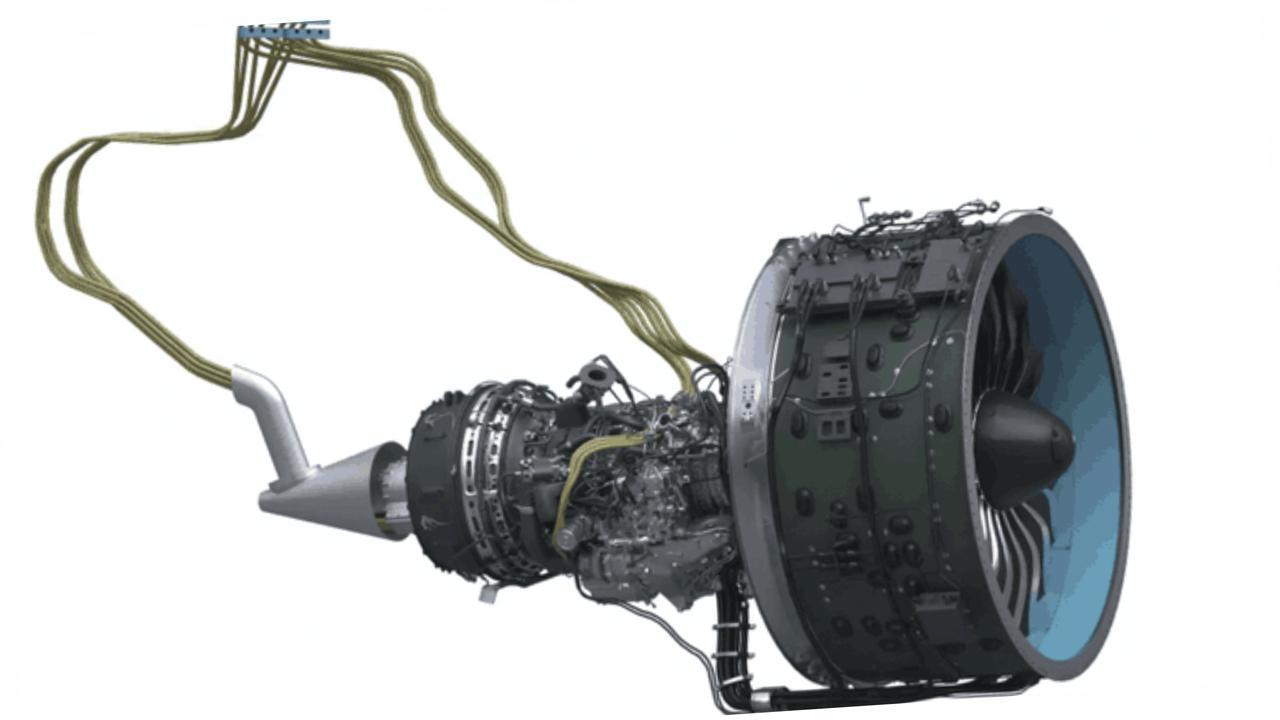
Post by : Amit
GKN Aerospace Delivers Smart Wiring for Clean Aviation’s Hybrid Aircraft
In a significant leap toward climate-conscious aviation, GKN Aerospace has successfully delivered an advanced electrical wiring system for Clean Aviation’s revolutionary hybrid-electric aircraft project. This milestone aligns with Europe’s growing ambition to decarbonize air travel through innovation, as hybrid-electric propulsion emerges as a viable solution for cutting aviation emissions without compromising operational performance.
This system delivery marks a key achievement under the Clean Aviation Joint Undertaking, a European public-private partnership focused on advancing green technologies for aviation. GKN’s contribution represents a major component of the Hybrid-Electric Regional Aircraft (HERA) demonstrator, which aims to validate the commercial viability of hybrid propulsion systems by 2035.
Wiring Designed for Extreme Demands
GKN Aerospace’s role goes beyond just supplying cables—it’s about engineering the electrical nervous system of next-generation aircraft. The Integrated Modular Power Electronics and Electrical Wiring Interconnection System (IMPE-EWIS) developed by GKN is designed to withstand the high-voltage, high-thermal, and vibration-heavy environment of hybrid flight.
This specialized wiring harness is responsible for safely distributing electrical energy from batteries and generators to the aircraft's electric propulsion units. Precision routing, EMI shielding, and thermal insulation are critical features of the system—ensuring reliable performance in both conventional and hybrid-electric modes.
Integration with Hybrid Propulsion Systems
The IMPE-EWIS is not just a network of wires. It’s a fully integrated solution that includes connectors, data interfaces, power distribution units, and embedded intelligence for real-time diagnostics. These smart capabilities allow ground crews and onboard systems to monitor cable health, detect overheating, and reroute energy flows when needed.
In hybrid-electric aircraft—where multiple power sources interact in real time—the wiring infrastructure becomes mission-critical. GKN’s system allows safe energy transitions between turbogenerator output and battery packs, while optimizing power efficiency and maintaining flight safety.
Supporting the HERA Technology Demonstrator
The wiring system is being deployed in the HERA demonstrator, which is led by a consortium of major aerospace stakeholders under Clean Aviation. The goal is to validate hybrid-electric flight technologies that can be scaled to commercial regional aircraft, significantly cutting carbon emissions.
GKN Aerospace’s system delivery will support flight tests expected in the late 2020s, serving as a validation platform for hybrid systems integration. Success here would pave the way for large-scale adoption of hybrid aircraft in European short-haul and regional routes, where emissions intensity is particularly high.
Supporting the EU's Green Goals
The European Union has made it clear: to meet climate targets, aviation must undergo a fundamental transformation. Clean Aviation is the EU’s primary initiative to support that vision, funded under Horizon Europe. The HERA demonstrator is central to that effort.
With its delivery of advanced EWIS technology, GKN Aerospace is positioning itself as a key enabler of zero-emission flight. Their solutions support not just sustainability but also aircraft weight reduction, modularity, and ease of assembly—core attributes for future green aircraft programs.
Manufacturing Expertise Backed by Collaboration
GKN’s wiring systems were designed and manufactured at its advanced Global Technology Centre in the UK, with support from other EU locations. Close coordination with Clean Aviation partners ensured system compatibility with evolving hybrid aircraft architectures.
Testing was conducted using digital twin simulations, as well as real-environment stress evaluations that mimic the demands of hybrid-electric propulsion—high voltage fluctuations, electromagnetic interference, and mechanical stresses. The validation process was rigorous, aiming to meet EASA certification pathways for future hybrid platforms.
Why Wiring Matters in the Hybrid Era
Electrical wiring in traditional aircraft has largely been a passive system. But in the hybrid-electric paradigm, wiring is a dynamic, load-bearing system that directly impacts propulsion efficiency, system reliability, and thermal management.
It is no longer just about connecting subsystems—it’s about managing megawatts of power across distributed architectures, while maintaining redundancy and lightweight construction. GKN’s wiring solution reflects this new reality, incorporating fiber optics, smart sensors, and composite jacketing to meet the stringent demands of hybrid flight.
Commercialization by 2035
While the current systems are being validated in a demonstrator platform, Clean Aviation’s ambition is clear: to have commercial hybrid-electric aircraft operational by 2035. GKN’s involvement in these early stages ensures it remains a strategic supplier as new electric and hybrid programs come online.
As the aerospace industry shifts toward sustainable propulsion, Tier 1 suppliers like GKN will play an increasingly central role in developing smart, efficient, and certifiable systems. Their electrical wiring solutions could soon become a standard across multiple aircraft programs—from regional jets to future eVTOLs.
Wiring the Future of Clean Aviation
The delivery of next-gen electrical wiring by GKN Aerospace for Clean Aviation’s hybrid demonstrator isn’t just a technical achievement—it’s a signal that the future of flight is already being assembled. As Europe races toward its green goals, foundational technologies like smart EWIS systems will define which companies lead the next aerospace era.
With its high-performance, intelligent wiring systems, GKN isn’t just delivering cables—it’s powering a movement toward cleaner skies and smarter aircraft.
GKN, Aviation, Hybrid Aircraft










Advances in Aerospace Technology and Commercial Aviation Recovery
Insights into breakthrough aerospace technologies and commercial aviation’s recovery amid 2025 chall

Defense Modernization and Strategic Spending Trends
Explore key trends in global defense modernization and strategic military spending shaping 2025 secu

Tens of Thousands Protest in Serbia on Anniversary of Deadly Roof Collapse
Tens of thousands in Novi Sad mark a year since a deadly station roof collapse that killed 16, prote

Canada PM Carney Apologizes to Trump Over Controversial Reagan Anti-Tariff Ad
Canadian PM Mark Carney apologized to President Trump over an Ontario anti-tariff ad quoting Reagan,

The ad that stirred a hornets nest, and made Canadian PM Carney say sorry to Trump
Canadian PM Mark Carney apologizes to US President Trump after a tariff-related ad causes diplomatic

Bengaluru-Mumbai Superfast Train Approved After 30-Year Wait
Railways approves new superfast train connecting Bengaluru and Mumbai, ending a 30-year demand, easi